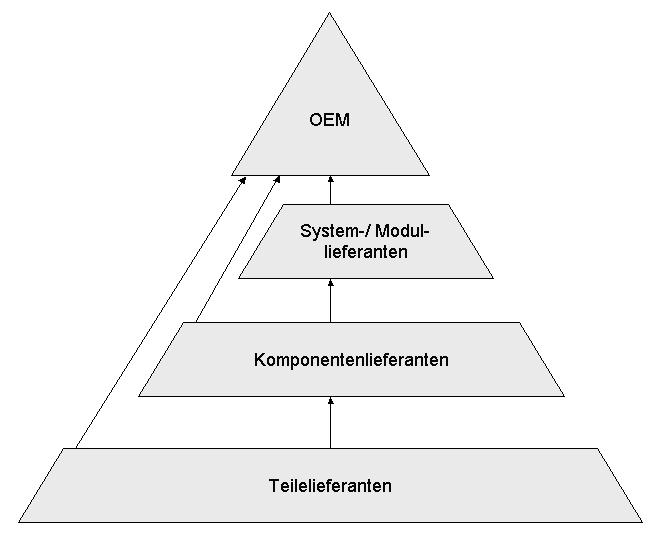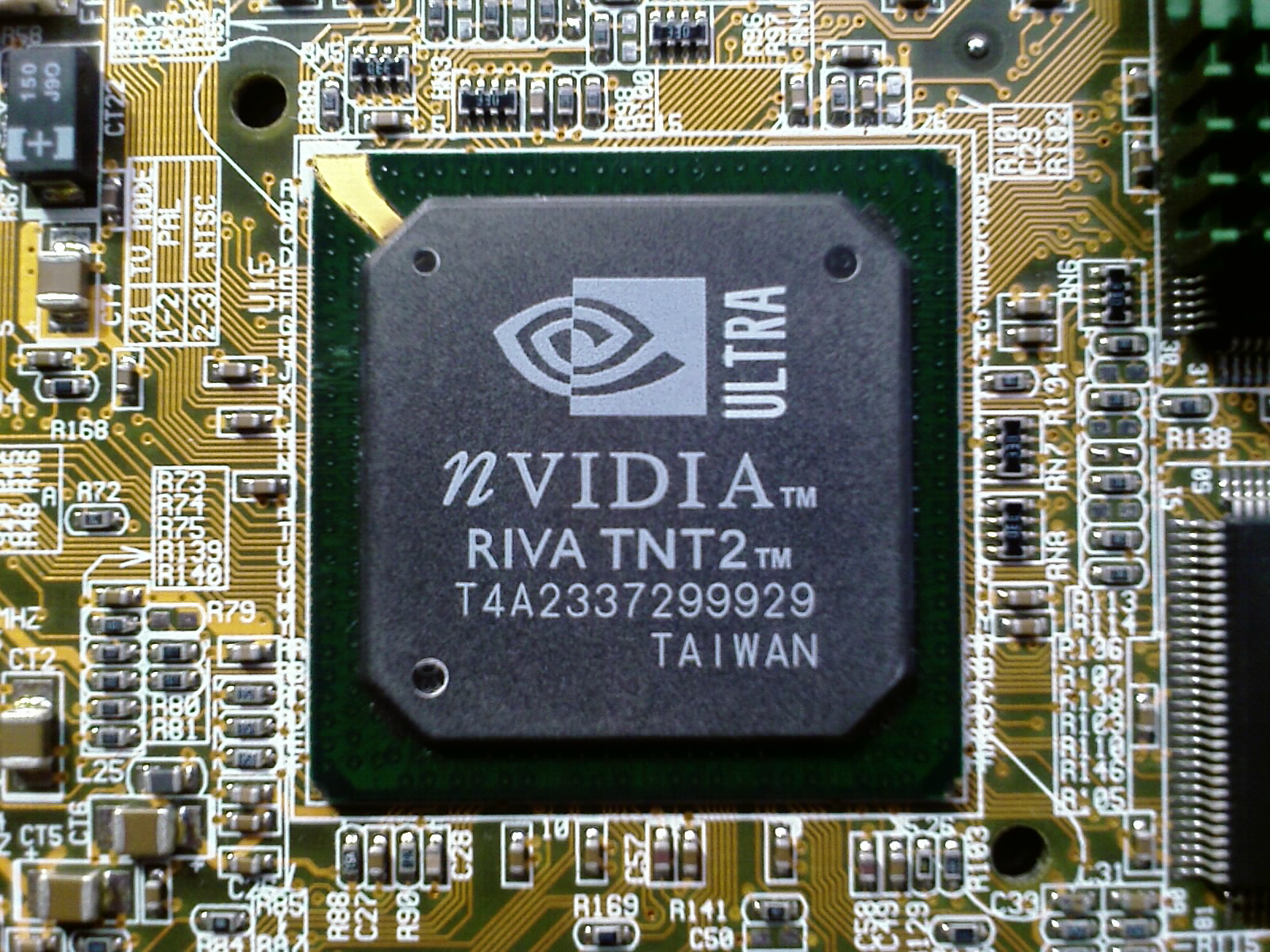|
S3 Savage
Savage was a product-line of PC graphics chipsets designed by S3. Graphics Processors Savage 3D At the 1998 E3 Expo S3 introduced the first Savage product, Savage3D. Compared to its ViRGE-derived predecessor (Trio3D), Savage3D was a technological leap forward. Its innovative feature-set included the following: * "free" (single-cycle) trilinear-filtering * hardware motion-compensation and subpicture alpha-blending ( MPEG-2 video) * integrated NTSC/PAL TV-encoder, (optional) Macrovision * S3 Texture Compression (S3TC) * multi-tap X/Y interpolating front-end (BITBLT) and back-end (overlay) video-scaler Unfortunately for S3, deliveries of the Savage3D were hampered by poor manufacturing yields. Only one major board-vendor, Hercules, made any real effort to ship a Savage3D product. S3's yield problems forced Hercules to hand pick usable chips from the silicon wafers. Combined with poor drivers and the chip's lack of multitexturing support, the Savage3D failed in the market. ... [...More Info...] [...Related Items...] OR: [Wikipedia] [Google] [Baidu] |
Diamond Multimedia
Diamond Multimedia is an American company that specializes in many forms of multimedia technology. They have produced graphics cards, motherboards, modems, sound cards and MP3 players, however the company began with the production of the TrackStar, a PC add-on card which emulated Apple II computers. They were one of the major players in the 2D and early 3D graphics card competition throughout the 1990s and early 2000s. Diamond Multimedia is a subsidiary of Tul Corporation. History The company was founded by Chong Moon Lee and H. H. Huh, who acted as the technical designer. Diamond Multimedia later merged with S3 Graphics, S3, Incorporated in 1999 after a long-time cooperative business arrangement, when S3 decided to expand their business from producing graphics chipsets to manufacturing retail graphics cards. The move paralleled the 1999 3dfx purchase of STB Systems, which changed 3dfx from a graphics chipset supplier to companies including Diamond, into a vertically-integrated ... [...More Info...] [...Related Items...] OR: [Wikipedia] [Google] [Baidu] |
Original Equipment Manufacturer
An original equipment manufacturer (OEM) is generally perceived as a company that produces non-aftermarket parts and equipment that may be marketed by another manufacturer. It is a common industry term recognized and used by many professional organizations such as SAE International, ISO, and others. However, the term is also used in several other ways, which causes ambiguity. It sometimes means the maker of a system that includes other companies' subsystems, an end-product producer, an automotive part that is manufactured by the same company that produced the original part used in the automobile's assembly, or a value-added reseller.Ken Olsen: PDP-1 and PDP-8 (page 3) , economicadventure.com Automotive parts When referring to auto parts, OEM refers to the manufactur ...[...More Info...] [...Related Items...] OR: [Wikipedia] [Google] [Baidu] |
Display Resolution
The display resolution or display modes of a digital television, computer monitor or display device is the number of distinct pixels in each dimension that can be displayed. It can be an ambiguous term especially as the displayed resolution is controlled by different factors in cathode ray tube (CRT) displays, flat-panel displays (including liquid-crystal displays) and projection displays using fixed picture-element (pixel) arrays. It is usually quoted as ', with the units in pixels: for example, ' means the width is 1024 pixels and the height is 768 pixels. This example would normally be spoken as "ten twenty-four by seven sixty-eight" or "ten twenty-four by seven six eight". One use of the term ''display resolution'' applies to fixed-pixel-array displays such as plasma display panels (PDP), liquid-crystal displays (LCD), Digital Light Processing (DLP) projectors, OLED displays, and similar technologies, and is simply the physical number of columns and rows of pixels creating ... [...More Info...] [...Related Items...] OR: [Wikipedia] [Google] [Baidu] |
Mobile Armor Division
Mobile may refer to: Places * Mobile, Alabama, a U.S. port city * Mobile County, Alabama * Mobile, Arizona, a small town near Phoenix, U.S. * Mobile, Newfoundland and Labrador Arts, entertainment, and media Music Groups and labels * Mobile (band), a Canadian rock band * Mobiles (band), a 1980s British band Other uses in music * ''Mobile'' (album), a 1999 album by Brazilian Paulinho Moska * "Mobile" (song), a 2003 song by Avril Lavigne from ''Let Go'' * "Mobile", a song by Gentle Giant from the album ''Free Hand'' Other uses in arts, entertainment, and media * Mobile (sculpture), a kinetic sculpture constructed to take advantage of the principle of equilibrium * ''Mobile'' (TV series), a British ITV drama * "Mobile", a short story by J. G. Ballard, later renamed "Venus Smiles" * Mobile, a feature of the game ''GunBound'' * ''Mobile Magazine'', a publication on portable electronics Military and law enforcement * ''Garde Mobile'', historic French military unit * Mobile Briga ... [...More Info...] [...Related Items...] OR: [Wikipedia] [Google] [Baidu] |
Quake II
''Quake II'' is a 1997 first-person shooter video game developed by id Software and published by Activision. It is the second installment of the Quake (series), ''Quake'' series, but not a direct sequel to ''Quake (video game), Quake''. The game's storyline is continued in its expansions and ''Quake 4''. The soundtrack for ''Quake II'' was mainly provided by Sonic Mayhem, with some additional tracks by Bill Brown (composer), Bill Brown; the main theme was also composed by Bill Brown and Rob Zombie, and one track by Jer Sypult. The soundtrack for the Nintendo 64 version of the game was composed by Aubrey Hodges, credited as Ken "Razor" Richmond. Gameplay ''Quake II'' is a first-person shooter, in which the player shoots enemies from the perspective of the main character. The gameplay is very similar to that featured in ''Quake'', in terms of movement and controls, although the player's movement speed has been slowed down, and the player now has the ability to crouch. The game re ... [...More Info...] [...Related Items...] OR: [Wikipedia] [Google] [Baidu] |
OpenGL
OpenGL (Open Graphics Library) is a cross-language, cross-platform application programming interface (API) for rendering 2D and 3D vector graphics. The API is typically used to interact with a graphics processing unit (GPU), to achieve hardware-accelerated rendering. Silicon Graphics, Inc. (SGI) began developing OpenGL in 1991 and released it on June 30, 1992; applications use it extensively in the fields of computer-aided design (CAD), virtual reality, scientific visualization, information visualization, flight simulation, and video games. Since 2006, OpenGL has been managed by the non-profit technology consortium Khronos Group. Design The OpenGL specification describes an abstract API for drawing 2D and 3D graphics. Although it is possible for the API to be implemented entirely in software, it is designed to be implemented mostly or entirely in hardware. The API is defined as a set of functions which may be called by the client program, alongside a set of named intege ... [...More Info...] [...Related Items...] OR: [Wikipedia] [Google] [Baidu] |
RIVA TNT2
The RIVA TNT2 is a graphics processing unit manufactured by Nvidia starting in early 1999. The chip is codenamed "NV5" because it is the 5th graphics chip design by Nvidia, succeeding the RIVA TNT (NV4). RIVA is an acronym for ''Real-time Interactive Video and Animation accelerator''.RIVA 128 Brochure Nvidia, accessed October 9, 2007. The "TNT" suffix refers to the chip's ability to work on two s at once (''TwiN Texel'').TNT2 Nvidia, accessed October 12, 2007. Nvidia removed RIVA from the name later in the chip's l ... [...More Info...] [...Related Items...] OR: [Wikipedia] [Google] [Baidu] |
Matrox G400
The G400 is a video card made by Matrox, released in September 1999. The graphics processor contains a 2D GUI, video, and Direct3D 6.0 3D accelerator. Codenamed "Toucan", it was a more powerful and refined version of its predecessor, the G200. Overview The Matrox G200 graphics processor had been a successful product, competing with the various 2D & 3D combination cards available in 1998. Matrox took the technology developed from the G200 project, refined it, and basically doubled it up to form the G400 processor. The new chip featured several new and innovative additions, such as multiple monitor output support, an all-around 32-bit rendering pipeline with high performance, further improved 2D and video acceleration, and a new 3D feature known as Environment Mapped Bump Mapping. Internally the G400 is a 256-bit processor, using what Matrox calls a "DualBus" architecture. This is an evolution of G200's "DualBus", which had been 128-bit. A Matrox "DualBus" chip consists of twin u ... [...More Info...] [...Related Items...] OR: [Wikipedia] [Google] [Baidu] |
ATI Rage
The ATI Rage (stylized as RAGE or rage) is a series of graphics chipsets developed by ATI Technologies offering graphical user interface (GUI) 2D acceleration, video acceleration, and 3D acceleration developed by ATI Technologies. It is the successor to the ATI Mach series of 2D accelerators. 3D RAGE (I) The original 3D RAGE (also known as Mach64 GT) chip was based upon a Mach64 2D core with new 3D functionality and MPEG-1 acceleration. The 3D RAGE was released in April 1996. The 3D RAGE was used in ATI's ''3D Xpression'' video board. Additionally, this chip was found integrated into the IBM Aptiva 2176 line with the Stealth case, and came with a Free Copy of MechWarrior 2: 31st Century Combat that only worked with this graphics chip to showcase its abilities. The memory configuration on this integrated chip was 2 Megabytes. 3D RAGE II (II+, II+DVD, IIc) The second generation Rage (aka Mach64 GT-B) offered roughly two times greater 3D performance. Its graphics processor ... [...More Info...] [...Related Items...] OR: [Wikipedia] [Google] [Baidu] |
Voodoo3
Voodoo3 was a series of computer gaming video cards manufactured and designed by 3dfx Interactive. It was the successor to the company's high-end Voodoo2 line and was based heavily upon the older Voodoo Banshee product. Voodoo3 was announced at COMDEX '98 and arrived on store shelves in early 1999. The Voodoo3 line was the first product manufactured by the combined STB Systems and 3dfx. History The 'Avenger' graphics core was originally conceived immediately after Banshee. Due to mis-management by 3dfx, this caused the next-generation 'Rampage' project to suffer delays which would prove to be fatal to the entire company. Avenger was pushed to the forefront as it offered a quicker time to market than the already delayed Rampage. Avenger was no more than the Banshee core with a second texture mapping unit (TMU) added - the same TMU which Banshee lost compared to Voodoo2. Avenger was thus merely a Voodoo2 with an integrated 128-bit 2D video accelerator and twice the clock speed. ... [...More Info...] [...Related Items...] OR: [Wikipedia] [Google] [Baidu] |
32-bit Color
Color depth or colour depth (see spelling differences), also known as bit depth, is either the number of bits used to indicate the color of a single pixel, or the number of bits used for each color component of a single pixel. When referring to a pixel, the concept can be defined as bits per pixel (bpp). When referring to a color component, the concept can be defined as bits per component, bits per channel, bits per color (all three abbreviated bpc), and also bits per pixel component, bits per color channel or bits per sample (bps). Modern standards tend to use bits per component, but historical lower-depth systems used bits per pixel more often. Color depth is only one aspect of color representation, expressing the precision with which the amount of each primary can be expressed; the other aspect is how broad a range of colors can be expressed (the gamut). The definition of both color precision and gamut is accomplished with a color encoding specification which assigns a digita ... [...More Info...] [...Related Items...] OR: [Wikipedia] [Google] [Baidu] |





